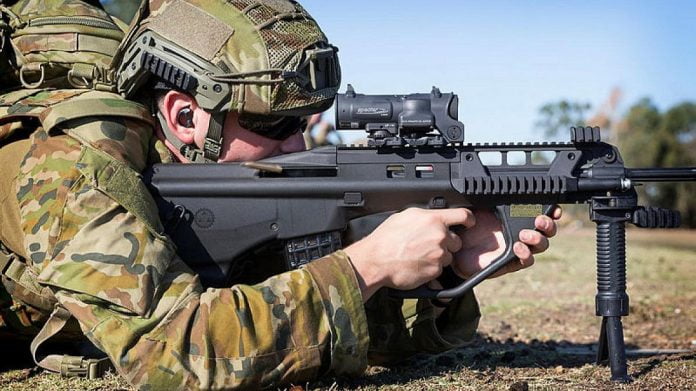Australia’s Department of Defence – DSRG via the Australian Army and the Defence Innovation Hub are seeking innovation proposals that will assist Defence in exploring next-generation Personal Electronic Countermeasures (Personal ECM) systems.
The focus of this challenge statement is personal ECM solutions. Defence recognises that due to the highly constrained size, weight and power considerations, within the context of a rapidly evolving threat environment, personal ECM is on the edge of technical feasibility. Therefore, Defence is seeking innovative solutions for a next-generation personal ECM system to provide protection to individual Australian Defence Force (ADF) personnel.
This challenge focuses on leveraging innovative technology to provide a next generation personal ECM system capable of delivering a high level of protection for individual ADF personnel against an evolving radio-controlled improvised explosive device (RCIED) threat, within the constraints of size, weight and power considerations (as stated below). The future deployable ADF requires a personal ECM system that is able to inhibit multiple RCIED triggers, is modular and sufficiently agile to meet changes in RCIED triggers, and be configurable to reliably operate in various environments.
Next generation personal ECM systems must be able to counter emerging and future vulnerabilities and threats, whilst minimising impact on an individual’s mobility. Army seeks to explore improvements in personal ECM system components (for example processing, amplifiers, antennas and batteries) that can be integrated into a single solution, and are easy to operate. Next generation personal ECM systems will need to be interoperable with other radio frequency (RF) and electrical systems, and able to log operational data to support exploitation.
Defence encourages respondents to collaborate broadly and/or form consortiums with industry leaders in ECM system componentry in an effort to achieve the maximum technological potential. Proposals should demonstrate a pathway for how technical upgrades will be achieved to ensure that the Personal ECM system maintains relevance to an evolving threat environment.
Defence considers the following design goals to be of particular importance in the design of a personal ECM system:
1. ADF individuals need to be protected against the widest possible range of commercial radio-controlled triggered threats, with minimal impact to their tactical mobility. This means consideration be given to the size, weight and power constraints of the proposed system. Defence considers that a total weight of 1-2kg is ideal, however, will consider other options that can demonstrate there will be minimal impact to mobility.
2. RCIED threats are constantly evolving as adversaries seek to exploit the rapid advance of commercial telecommunications and recreational technologies in order to gain an advantage over the ADF. Solutions that are offered need to consider how the system will be upgraded, in terms of both hardware and software, over the proposed life of type of the system.
3. ADF individuals will perform a variety of tasks whilst under the protection of personal ECM. The solutions offered need to consider the ease of use of the system by an operator, including the ability to quickly identify that the system is operational and the ability to rapidly load different RCIED defeat protocols/waveforms.
Defence recognises that due to the highly constrained size, weight and power considerations, within the context of a rapidly evolving threat environment, Personal ECM is on the edge of technical feasibility. Therefore, Defence is seeking innovative solutions for a next-generation Personal ECM system to provide protection to individual AD personnel.
Defence would prefer proposals based on products that are at a reasonable technological maturity, i.e. at TRL 4 (component and/or breadboard laboratory validated) to TRL 6 (system adequacy validated in a simulated environment). Proposals at lower levels of technological maturity are unlikely to be able to be demonstrated within the preferred 18-month timeframe.
Defence’s objective of the RFP is to conduct a detailed evaluation of proposals to select a number of Respondents to enter into an innovation contract with Defence to deliver a prototype system for the Australian Army within 18 months after contract commencement. Respondents may need to satisfy security requirements to review and hold information classified up to ‘SECRET’. This material has limited release to Australia, Canada, New Zealand, United Kingdom and the United States of America.
If your prototype will not be ready in this timeframe, you should not respond to this RFP. An alternative is to consider submitting an innovation proposal through the Defence Innovation Hub portal which is available at the following link: https://www.innovationhub.defence.gov.au/call-for-submissions/.
This is a future tender with a projected release date of October 14, 2021 – click here for more information.
#sen.news









